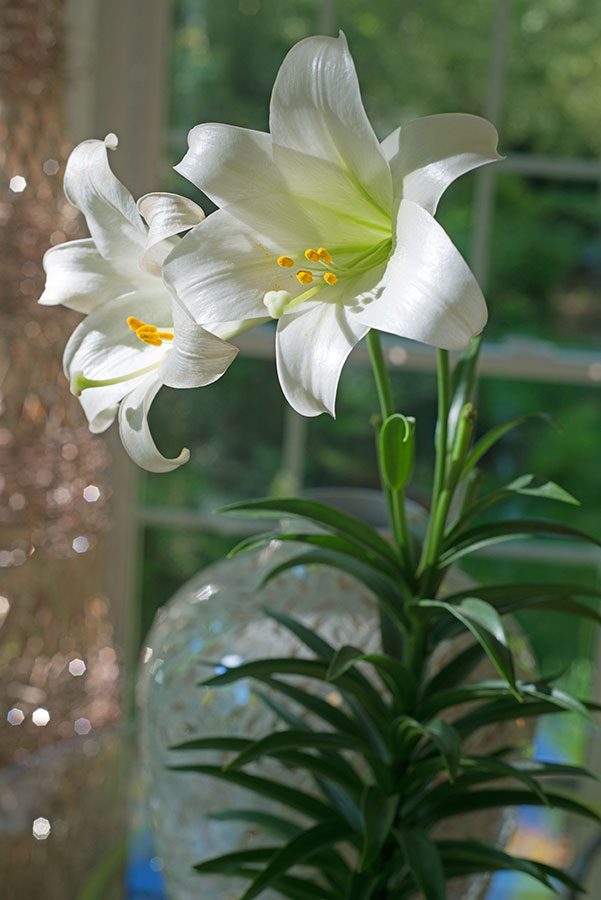Easter Lilies 101
Plus Garden To-Do’s for April
By L.A. JacksonAfter Easter, what do you do with an Easter lily? Certainly not a toss-away plant, Easter lily (Lilium longiflorum) can be saved and easily transitioned to outdoor gardens this spring, where it has the hardiness to not only survive but thrive.
First, two words of caution: 1) While your Easter lily is showing off inside, keep it away from cats, as even eating a few leaves can be very harmful to your feline friends; and 2) place the plant in a location where it won’t be brushed up against because the flowers’ golden yellow anthers are instant stain makers on both skin and clothes.
Here are a few pointers to help Easter lilies thrive outside:
- If your Easter lily came in a pot wrapped in fancy foil, remove it to prevent water retention from turning the container into a bulb-killing bog.
- The best place inside for an Easter lily while it is waiting to head outdoors is in a bright room but out of direct sunlight. Snip off flowers as they fade, and water the pot only when its soil surface feels dry to the touch.
- After the threat of frost has passed, your Easter lily can be planted in the garden. Pick a sunny site that has good drainage and, if possible, some light midafternoon shade to shield these beauties from the worst of the summer heat to prolong their flower displays.
- An Easter lily bulb should be planted about six inches deep in well-worked soil that has been enriched with compost or other organic amendment.
- To help even out soil moisture and keep the roots cool during the summer, add a two-inch layer of mulch around your Easter lily.
- Cut back any of the original foliage as it starts to turn brown. New leaves should sprout during the summer. In autumn, when this foliage fades to yellow, prune it even to the ground.
- For a better display of flowers, add a dusting of a low nitrogen, time-release fertilizer next spring when new shoots just begin to pop from the soil. Also, at this time, remove old mulch and replace it with a fresh organic soil covering.
Finally, don’t expect your Easter lily to blissfully bloom during the Easter season next year. In the garden, it will naturally begin to flower in early summer.
Garden To-Do’s for April

- For clematis to put on a proper flower show, remember, this divine vine has specific, essential requirements, including at least five hours of full sun a day. Also, the root zone should be kept cool and moist (not boggy) during the summer heat. Planting in well-worked, well-amended soil and adding three to four inches of mulch will take care of this need. Finally, go easy on nitrogen. Use either a low-nitrogen fertilizer or one that has time-release nitrogen because too much of this nutrient will result in plenty of new foliage, but lessen the number of beautiful blooms.
- Cool-season veggies such as spinach, carrots, radishes, collard greens, parsnips and lettuce that were seeded outside last month should now be thinned to their proper spacing requirements.
- Remember to set aside an area for the little gardeners in your family. Show them how to prepare the soil and then help the tykes grow such easy annuals as zinnias, sunflowers, pole beans or pumpkins.
- If you haven’t given your dog or cat a flea and tick treatment in the last month, put any of their brushings around the bird feeder, and see how fast the fuzz flies away as building material for nests. And while it might be tempting to also add dryer lint, don’t — it could contain residual cleaning chemicals that can be unsafe for birds.
-
Share this story:


